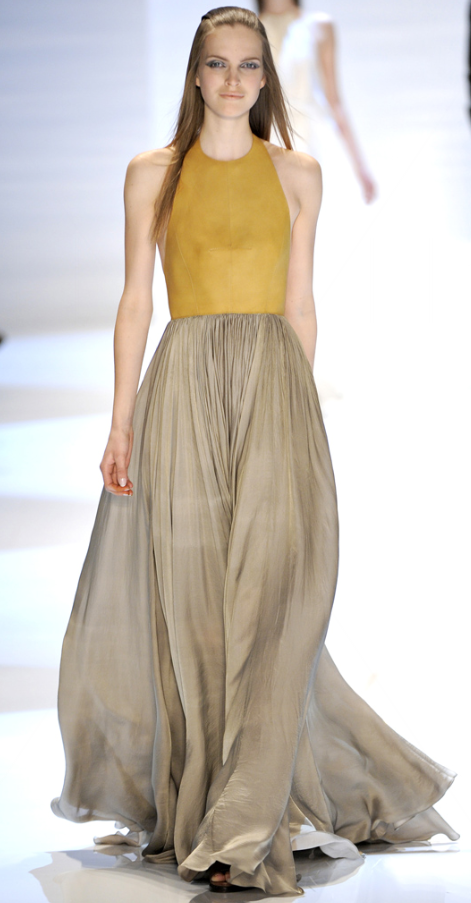 Derek Lam, via Quintessence
Derek Lam, via Quintessence
So. It’s New York Fashion Week. Meaning that all kinds of designers are holding all kinds of fashion shows for all kinds of people. In New York City.
Perhaps that last bit was unnecessary?
Let us ask this. If you are interested at all in style – defined as ensuring your clothing communicates your beliefs, follows your aesthetics, and flatters your body – will you care about Fashion Week?
Kind of. If you want to. Bear with me.
The fashion industry is in the midst of one of those paradigm shifts we in technology know well. For other businesses, unused to running full-steam in one direction, halting on a dime, and running in another direction, unfamiliar with disorienting pell-mell change, these moments may feel scary. For any industry, they present to the wise an occasion for profit. It’s a time interesting both to those who like style and to those who like business strategy.
Let us deconstruct.
What Happened To The Fashion Industry We Used To Know?
In the old days of the fashion industry, the world looked like this.
- Couture houses, and eventually ready to wear enterprises, held small shows to show, well, clothes
- Magazine and newspaper editors covered the shows as news
- Influential socialites and movie stars ordered couture clothing
- Department stores, prestige boutique, and eventually single-brand chain store buyers ordered RTW for future seasons
- Magazines showed RTW pictures
- Movie stars wore clothing seen in magazines
- Off we went to buy “the look” on Main Street
- We discussed our purchases with friends
- We wondered what would come next
This fairly monolithic supply chain generated waves of fashion, if you will, in which consumers participated to greater or lesser extent.
Over the past decade, e-commerce and Internet image proliferation has provoked all sorts of disruption. One might even say an explosion.
- Designers can rise to fame via television shows such as Project Runway and the Rachel Zoe show
- Images of collections emerge immediately from shows and proliferate, everywhere
- Commentary about fashion can be found on every blogging corner
- One can make any actual purchase online at either sites owned by brick and mortar retail or by Internet-only and flash sale sites such as net-a-porter, and Gilt Group.
- Vintage clothing has been added to the mix
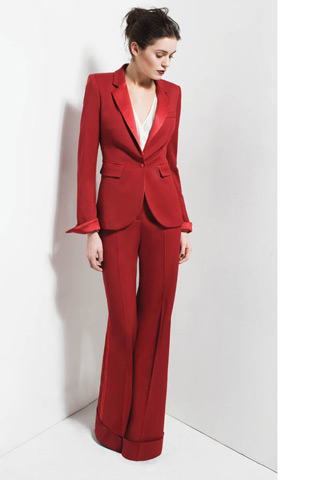 Rachel Zoe. I know. Via Lily Lemontree.
Rachel Zoe. I know. Via Lily Lemontree.
Are we done yet?
No. Although it might feel that we have reached an apogee of change, I estimate we’re maybe 60% through. At least for this particular detonation. To wit,
- Carine Roitfeld, the former editor of Vogue France, just quit to, “do something on the Internet.” Read more here.
- Jennine Jacob, founder of Independent Fashion Bloggers, and blogger herself at The Coveted, organized a one-day session last Friday, before Fashion Week. It was held in Milk Studios,a premiere fashion venue, and Jack and Lazaro of Proenza Schouler gave the keynote address. Yes. Those guys. (who make this amazing bag, but I’m in business mode here, so I won’t digress.)
- As of last week, technology now allows for Dylana Suarez, a young personal style blogger, to tag the clothes she wears in her photos. In other words, we can buy what she’s wearing. One-click.
- Fashion has always taken cues from movies and television. Now technologies available for video viewing collide, as competing interests in the television and online video industries battle over which system will command what functionality. The speed with which we can act on style cues will increase exponentially. (A Mario Brothers game comes to mind. Industries on platforms, bonking each other, we the consumer collecting fallen loot below.)
- Designers now stage large and ornate shows open to many, rococo reinventions of a previously necessary ritual. To the point that the truly forward thinking Tom Ford made his show this year small and exclusive. You know, setting the bar for cool.
All of which has led to highly diverse trends in style. Even The Cut, New York Magazine’s excellent style blog, proclaimed this year’s New York Fashion Week “Something for everyone.”
The impact? It’s hard to generate waves of anything when the beach is exploding. What was once a wave of fashion has become rivulets. Quite active rivulets, at that, bordering on roaring floods.
We have street style, as defined by The Sartorialist and his ilk, teen style, midlife style. Academic chic. Nerd chic. Rocker chic. One might even argue that the current “boho chic,” and “many points of light” looks, characterized by multiple accessories, is style’s response to the change in industry structure. As in, “Fine! You won’t make up your minds about what we ought to wear? We will just wear EVERYTHING. All at once.”
Or it could be the deep truth that everyone’s different has found a broader playing field. Let’s say that’s it. We can’t know everything.
Will Change Continue To Accelerate?
Are we left, then, in a world where anything and everything goes? Where the pace of change becomes ever more rapid? Will we wind up like lonely hikers making their way across a fragmented landscape? I think not.
Some very high level trends are still visible, despite multi-variate offerings. Here’s what we see at Fashion Week this year.
Our silhouette shifts… This year we’re making the shift to a wider leg, a higher waist, and bigger stuff around our neck..
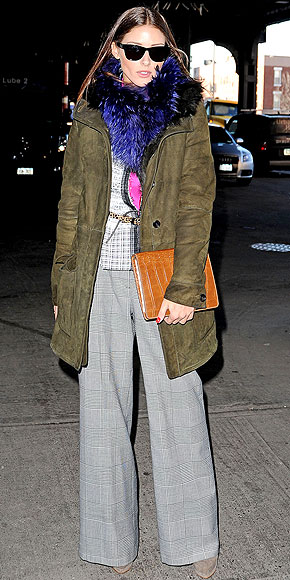 via @LilyLemontree
via @LilyLemontree
…but the “many points of light” trend carries on, i.e. lots of variety in accessories, print and texture. Note statement shoes, dishevelment, and head ornaments. Use of several different colors at once is part of this approach.
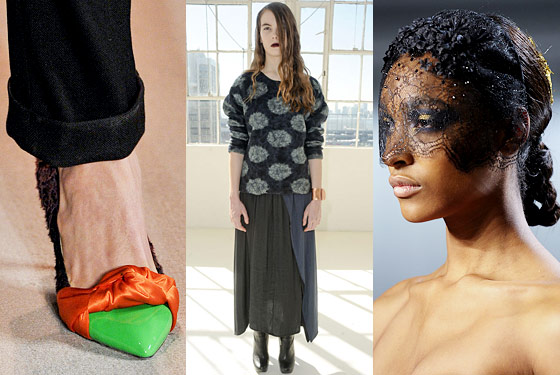 Via The Cut, Five Things We Liked On Friday
Via The Cut, Five Things We Liked On Friday
Another thing. Fashion provides value in belonging, as well in self-expression. Our need for taste makers remains, anchoring us through disruption.
The question is, “Who will they be?” Answer? Multiple and eventually converging. Taste makers emerge within within creative visual online communities,
- Tumblr (they sponsored Tumblr bloggers to Fashion Week. I know!)
- Pinterest (Communities of pinned images)
- Polyvore (Kindergarten cut and pasting for the clothing-obsessed)
- Shopstyle (The best way to find and mark outfits of clothing that can actually be bought)
Not to forget blogs. The usual suspects include, Already Pretty, Inside Out Style, Passage des Pearles, Une Femme, A Femme (no they are not the same people), Mop Philosopher, Fashion for Nerds, les anti-modernes, and the inimitable east side bride. Not to mention blogs I’ve more recently discovered, including The Coveted, Color Me Nana, What Would a Nerd Wear, et alia.
Of course, we all live in real life communities too. In the context of our very own Main Streets, albeit more and more closely tied to the online world via geographically-aware systems and services. Real-life people, on real live streets, will continue to affect us. I know you were starting to worry about this online stuff, what with Avatar, turning blue, growing cat faces, and all. Phew.
Industries Are Structures, Not Forces Of Nature, And Someone Is Going To Make A Lot Of Money On This Blow-Up
Industry structural changes are par for the course. (And why talking business always brings out the sports metaphors we still don’t quite know). Fashion is treated differently because a) it involves artists, who flummox the business sorts b) there’s a very volatile risk/return curve c) it requires the capture of a woman’s imagination and many venture capitalists are the kinds of guys who are apt to say, “I just don’t get women.”
Still, industry structure is only structure, no matter how many feathers, sequins, or skulls we may affix. And right now, fashion and technology are playing with dynamite. Once technology arrives on the scene, venture capitalists follow.
Let’s be clear. Someone is going to make a heck of a lot of money in all this change. Someone who relocates taste-making and/or commerce to a platform they control. For good reason. Predicting shifts is tricky, and often driven by a technology that’s still unborn, waiting, in a difficult technical person’s mind. Implementing business operations without misstep, or correcting the missteps quickly, is also tough. So those who manage, profit. Big-time.
Style Will Never Go Out Of, Well, Style
OK. I feel the technology hormones leaving my body. Very testosterone-producing, the prospect of wealth.
If you care not one whit for industries, and only for style, what then? At the end of the day, and happily, my liking for this Jason Wu piece bears more significance now that it did 10 years ago. Because Jason may be listening. I like just enough color and pattern to make the fashion birdie cheep in my heart. Something one can wear to stride about, all the while feeling like a girl. I might even want a veiled hat.
In the brave new world, I’m likely to find what I’m looking for. So are you. (Unless you want good, classic women’s khakis. But I digress.)
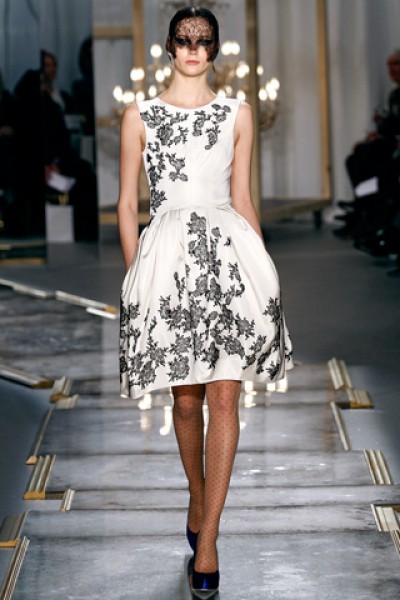 Via Style.com, but admired also at the Preppy Princess and All Things Fabulous
Via Style.com, but admired also at the Preppy Princess and All Things Fabulous
Someone with a different body might not like a full skirt. They might prefer this. Instead. To each her own.
On the other hand, to the victor go the spoils.
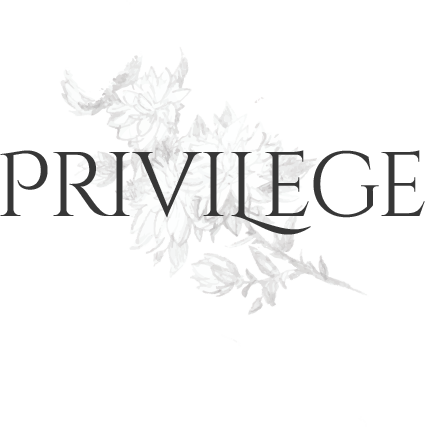
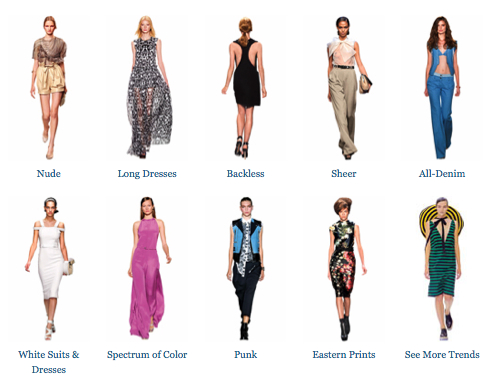
44 Responses
I think I am following this….but beg to differ on a few points. Isn’t the very premise of the fashion world much like the decorating world and many other worlds for that matter but particularly fashion oriented markets, that they are based on change? Without change, no one makes money, the manufacturers come to a halt, the showrooms stop receiving traffic, the buyers lose their jobs as there is nothing new to buy, people stop spending and the dominos continue to fall.
So change is vital and in fact, the very nerve center for the fashion world. You say things have changed….. its in constant motion, always changing. However the more things change the more they stay the same! There really is no “old” or “new” with fashion, its one giant revolving door that is constantly in motion. On some of your list of how it “used to be”…I do not agree, and here is where:
We STILL wonder what will come next, and no one knows
We STILL discuss fashion with our friends because more of us can afford high fashion or “wanna be high fashion” think Zara, HandM,etc….
Editors and the like cover the shows as news and in droves at that, and many are doing double duty to report not only for their magazines but often for their online sites, blogs, personal websites,etc…
Magazines still show RTW photos in fact there are more pictures of RTW collections because there are more magazines and of course the internet!
Last, vintage clothing particularly to “fashion insiders” has always been and always will be part of the mix, that is nothing new by any means
I say all this with some degree of expertise,started off at 17 as a model for Ford, traveled the world for 5 years, while earning my degree, then worked at Vogue and Elle and now am a freelancer for several publicaitons, most recently working a lot for Town and Country.
Of course we will NEVER be done evolving, the fashion industry I refer to, because the very nature is a constantly evolving industry that always has one eye out on the next trend, the next great thing to hit the fashion runways.
No doubt the internet and e-commerce has dramatically changed things..for the better I believe becuase it reaches more people and makes what was once thought to be only for the affluent more affordable for everyone and in this instance, we all win.
Wow!! Fabulous post and I love your new blog layout. So much to see and so much to think about. This is one of those posts I will have to save and come back to again and again. I am off to add you to http://www.cashmerejeans.blogspot.com to make sure I do!!!
Loving your photo pics here :)
Jeanne xx
Lisa you’ve hit the nail on the head with this post. The changes going on in the fashion industry are upsetting the “natural” order of the industry and are still going on. You are right that someone is going to make a lot of money when all is said and done, but know one knows where the industry is going yet. It’s really up to the visionaries right now to take some risks and push the industry further than it’s gone before.
@Katie T.
I disagree that the industry has always been changing. Yes, fashion itself is based on the very notion of change. Fashion isn’t fashion unless it changes.
But fashion is the product, it’s not the industry. The industry has been set up in a very top down system since the mid 20th century. Sure, occasionally a trend arises from bottom to top, but again that is the product, not the industry.
What’s happening right now is a shake up of the industry structure. The people at the top no longer have all the power. They don’t like it so much — many articles have been written trying to condemn the fashion blogger.
Show me an industry that is not changing and whose structure is not prone to change, whether for better or worse. Its no earth breaking news that the tiny monopoly that “those at the pinnacle in the fashion world” have or had in this fashion world is slowly loosening…EVERYTHING AS WE KNOW IT is changing due to technogolgy, our small world getting smaller and e commerce.
I am somewhat in the epi center of it and I just fail to fully agree with the above post, thats all. A matter of opinion, nothing more nothing less. I live this day in and day out, so perhaps my perspective is different. Having been to 5 shows in the last 3 days…..I have not seen any more or less of a frenzy at these shows than I did 10 years ago. There are no groundbreaking changes happening….it is a subtle shift of power which in my humble opinion is anatural progression in virutally any relam. Some take longer than others, thats all. I also will agree with the notion that clothing today is more about almost limitless self expression than it was even a decade ago…more is more widely accepted, this is true. Don’t think its a trend just a sign of the times.
One last comment, when my mother grew up there was one major fashion magazine, Vogue introduced at the turn of the century then Harpers Bazaar came along.Fashions were often exploited through movies and TV. not via magazines as they are today, that was just the start. Magazine editors were not known on a first name basis, nor were they the celebrities that they are today, we didnt’ refer to Hollywoods
darlings by the first name of the designer outfit they were sporting..now we say “Kate is wearing Ralph’ or “Christy is wearing Armani”….this type of talk did not exist when my mother was growing up so yes, I think the fashion industry in the last century has been changing constantly all along.
Fashion, like so many industries, is experiencing the huge impact that e-commerce, the Web, blogs, e-zines, etc. have on a business. Whether good or bad, it’s changing the face of how fashion is design, sold and marketed. It’s interesting to see how this will play out. Great post!
As someone not on the inside, I believe there are two types of change going on here, neither having anything to do with the clothing. First, the cycle times have shortened. Technology has made it possible for anyone, anywhere in the world with an internet connection to see the looks a few minutes to a few hours after the runway show. That is profoundly different than the experience of years ago, when the fall looks being shown this week would appear in print months later, and in the stores after that. The second paradigm change is the decreasing importance of editors and buyers. I can, in theory, pre-order my Ralph Lauren collection pieces online just days after the show. As more designers do this directly through their websites, it becomes less important what Anna Wintour or the Saks buyer thinks about a particular look. Editors and buyers won’t go away, but there will be more need to justify and perhaps retool those functions.
In the mode of “everything old is new again” this is how it all started – a designer showing his wares directly to a customer. Technology has only changed the scale.
I don’t think every woman has the confidence, even if she has the money, to make wardrobe decisions on her own. Why do I think this? Because I was the fashion director of Sak’s 5th Avenue & have first-hand knowledge of how much time the consultants, & yes even myself, spent with clients who were in society and/or the public eye about seasonal wardrobe choices. I can definitely order my merchandise without assistance, but I also know it’s a whole lot of fun to have input and confidence courtesy your favorite consultant. If you were right about this Rachel Zoe et al wouldn’t have jobs. Just saying.
Love. This. Post. So astute and insightful. I’m not as macro-business savvy, but what I’ve noticed in the last few years is a democratization of style.
I’m also starting to see glimmers that designers and retailers have woken up and are no longer chasing only the twenty-something Trendistas. Hope springs eternal.
Now I’m going to have to go back and read this again.
And thanks for including me with that compendium of stylish and fabulous bloggers!
OMG, I am overwhelmed by you once again. I remember the days when I covered the collections as news — my placement depended upon my employer (I did have a few years in the front row).
I think fashion has always been one big circus, but it was sooo much fun, even with the bitchy editors who stole other people’s seats. It is hard to fathom thought that some designers seem to be rock stars. Karl has bodyguards! And to think I knew him when he returned telephone calls. Oh, never mind, I guess if I were an editor of something substantial he might still pick-up.
Love the lots of stuff going on around the neck. That saves a tremendous amount of money, anesthesia and down time. Shoes are great btw..
Thought you looked absolutely beautiful in your Already Pretty picture. You are gorgeous. The pearls are nice too.
Am I rambling or what?
I was so surprised by the mention in this well thought out (scholarly?), beautifully written expose. Thank you so much.
Do we like Internet shopping? I think I do, sometimes. I missed out on the drop-dead-perfect Tara Jarmon coat I saw at the Bon Marche the other day (My Reason For Living In France always tells me when I see something I should jump on it. I’ll never learn.) At any rate, called a couple of Tara Jarmon boutiques — on the outside chance — and was referred by them to a general markdown site which carries lots of designers. I thought it was odd, yet helpful and quite nice.
xoxo,
Tish
P.S.: I usually have problems writing to you in this space, but today everything is going swimmingly as you can see by the way I’ve blahed on.
Love this post. I recently sat on a trend webinar that was speaking to trends in spring 2012. And really it felt like it was about spring 2011. Almost everything included is on the streets already. Trends come so much faster than they did in the past. And frankly by the times clothes come out the next “season” I’m already sort of bored of them. I actually have chosen NOT to watch any NYFW shows online this time. Obviously I can’t completely avoid it, and I’m happy to hear about the big trends. Just so it helps guide me on what to invest in this season or not. And I’m really glad I bought my skinny trousers on sale.
And please feel free to digress on the good women’s khakis… happy to contribute to that rant.
Well done Miss LPC, very much so. While the fashions themselves may change (be they truly ‘new,’ or evocative or earlier eras), delivery of news and information about them has changed dramatically, and there’s no going back, there is only going further. Your comment on Jason Wu, “Jason may be listening” is more than apt.
You won’t be surprised to know that I am not thrilled with all of the changes, having grown weary of who is wearing whom, it now seems to overshadow the event or function or meeting to which someone is being worn. And while any of us can “turn it off” (the television, the print magazines & newspapers, the computer) it has become pervasive and in some instances invasive.
But overall I revel in it. All of it. The sites of all varieties, the images, the words, the comments, everything. For someone like myself it is bliss.
Fab post, as always.
tp
“If you are interested at all in style – defined as ensuring your clothing communicates your beliefs, follows your aesthetics, and flatters your body …”
I’m still working on a definition of style, so thank you for this very interesting one.
I like what Pseu said about the democratization of style. I’m early in my fashion education effort, but already see how the business changes you speak of are making fashion more accessible to individuals and to previously excluded groups, e.g., mid-life.
Getting back to your definition, I wonder if the decision about what to communicate has fundamentally changed in that the social contract aspect of dress is now entirely optional. You can participate or not.
Well, it really parallels what happened to the music business years ago. It used to be that getting airplay was everything, and you had to be Really Good to get a chance at being promoted into one of a very limited number of slots by the handful of powerful people at the heart of the system. Then the internet happened, and the business was simply no longer controllable by the traditional oligarchy.
It is all about the change in information distribution, so of COURSE the oligarchy doesn’t like it. The new ways dilute their power, and the result is that we are overrun with fragmented channels of style, an exponential number of splintered tastes that go off in asymptotic directions. (How’s that for purple prose…)
Interesting, provocative post- as always! Miss Janey is looking forward to the resurgence of wide-leg pants, but she always keeps a pair or two around as they’re her preference, even when designers arew pushing narrow legs. For Miss J, things won’t change that much. “Pick what you like, leave the rest”.
You are too brilliant, LPC! My favorite line of all is, “I like just enough color and pattern to make the fashion birdie cheep in my heart.” So poetic and so business-savvy, what a wonderful mix :)
Have you seen the Advanced Style blog? I think you might enjoy it: http://advancedstyle.blogspot.com/
My favorite column in “17” magazine (maybe 10-15 yrs ago) used to be the one where they visited a different high school and profiled the real students and their outfits. Blogs and such allow us to do that on such a wider, or as you say — exploded, scale. People LIKE to see what others are wearing… with Facebook, the web is becoming more social, and many of these tools you’re describing bring that sociability to a fashion focus.
I miss watching fashion week on NY1! But I am in complete agreement with you. Also, they had a piece on CNN the other day about the proliferation of Asian designers, as well. And it said that 70% of the student population at Parsons is Asian. Very interesting.
Primary among my reasons for liking our new world is that the fashion press never acknowledged that women who look like me exist and, as a result, never felt pressed to present clothes that might have a glancing blow with looking good on me.
In the new order, I can find any number of blogs and e-zines that were specifically created for the purpose of showing me looks and items and designers that might be flattering and/or appropriate. My workplace offers no guidance, nor do my social circles. Without the internet, I quite literally wouldn’t know how to dress myself.
I’m just curious if it’s possible that rather than “someone making a heck of a lot of money” a heck of a lot of people will make some money? It seems to me that would be explosive change, particularly in the fashion/textile industry.
Interesting post. To me, it reminds me of what I understand from the post-modern movement in art/theatre/music/etc, when the ladder of hierarchy was turned on its side. In a stage production, for example, instead of having one important point of focus with onstage action, there became many different foci, all equally important. To me, it seems like the fashion industry and the creators of trends are going through a similar shift, with the “power” being more equalized, or at least spread out a lot more.
*applause*
Fascinating stuff. Technology, fashion, and trenchant analysis, all in one post. LPC, you are my kinda woman.
What a thorough commentary on the state of fashion today! No matter how clothes are bought, marketed or sold it all comes down to this: we love fashion because of the way it makes us feel – beautiful, happy and unique!
You know, the internet – and cable television – has done much the same to the food industry: it has changed not only the way we eat, cook and purchase food, but even how we view it.
Thought-provoking post, Lisa – thank you!
Cheers for this trenchant post; love it when you get all businessy, Lisa.
I’d add that-in terms of change needed-the clothes shown at Fashion Week will not be produced in my size, US 14-16, which is the size of the average American woman now. You would think retailers and designers like Derek Lam might provide their clothes for them. (Of course there is Talbot’s and some department store brands, but we long for access to really good clothes in our size.)
Katie T. – Thank you very much for the insider perspective. There’s a concept in the study of industries called “disruptive change.” Coined by Clayton Christensen, and first introduced in his book, “The Innovator’s Dilemma,” he points out that big changes usually happen outside the mainstream. Upstarts are willing to break systems, the established interests want to keep the status quo intact. I think that’s what is happening here. It is fascinating to have you confirm how it feels from where you sit. Yes, fashion has always been an industry of change. But the structure of the industry itself, driven by technology shifts, that’s where the big stuff is happening right now, in my opinion.
People like you remain relevant, especially those who are out reading online, commenting, posting, putting up pictures. Cathy Horyn still writes the best news coverage of fashion shows I’ve ever read or hope to read.
By the way, I am more than happy to have disagreement here. I appreciate your opinions and experience.
Jeanne – Thank you! And thank you for the link.
Ms. Bunny – Much appreciated. It is up to some visionaries, no question. On the other hand, I’m guessing that as always there will be a fair amount of luck and timing that determine the outcomes.
DocP – Exactly. The changes I am pointing out don’t have much to do with clothing, although I would hazard a guess, as I said, that the current eclecticism is helped along by industry fragmentation. And the idea that we have come round to how it all started underscores the enduring value proposition of designers themselves. We like fashion. We like designers. The rest is infrastructure and business models.
deja – Thank you and you are welcome. Here’s to hope!
Tish – First of all, Oh My God You Knew Karl! :). Thank you so much. You also contribute insider perspective to all this. I love the image of a circus, one can absolutely see that enduring, just on different platforms. Thank you also for the compliment. Much appreciated. Compliments never sound like rambling:).
Tracey – I have read that designers are becoming exhausted by the need to put out ever-increasing collections, just as you are tired of seeing it all. The good women’s khakis though, how they get lost in the shuffle I will never understand. Contribute away!
TPP – Thank you. You make me remember, information itself is the biggest product of all.
Susan – “I wonder if the decision about what to communicate has fundamentally changed in that the social contract aspect of dress is now entirely optional. You can participate or not.” Except at work, and events with components of ritual, where your participation or lack thereof will matter a lot. I really enjoy seeing you turn your analytical mind to this question. And I’m curious, how do you articulate your own aesthetic?
Someone – Yes. It is like what happened to music. Purple prose is often a smoke signal for industry explosions:).
Miss Janey – Miss Janet is obviously a woman who knows her own mind. I admire your assurance.
Danielle – Well that warms my little heart, it does. Thank you. I have seen Advanced Style. They are the Kings and Queens of the Land of Artsy Cousins. They astonish me. And you are so right, the biggest of part of the technology change having such an impact is social networking.
Sheri – I am also thinking it’s time to really keep an eye on Asian designers.
Marsha – That’s wonderful. Technology shifts only bring about change IF people benefit from them.
Town and Country – I agree, multiple people will be making some money. But how many of them will be in fashion as we currently define it, or in textiles, I really don’t know. I understand the way making money works in tech, not so much in other industries.
Adventures Along The Way – How interesting. I suppose when any structure breaks up, whether a structure of intellectual concepts or an industry, those at the top protest. The goose that lays the golden egg decides to become a sparrow. Or, you know, a pig:).
Marieanne – Thank you! *bows, trenchantly* :). What a great word.
Kena – I agree. And I think the key thing is to understand that how that feeling is delivered involves a lot more than just the clothing itself.
Jan – I hadn’t even considered that. But you’re right.
Duchesse – :). I know this was a lot of words and fewer pretty pictures, but there are times when old habits die hard. So much is going on, it’s hard not to notice. Thank you. And I hope too that more and more people are well-served in their quest to enjoy getting dressed.
Fashion is always changing, somehow I think fashion tries a spot too hard, I also find the same with art.
Fashion is current; like the latest Ipod. Fashion allows one to flirt with style. Indeed, I agree that the industry is exploding; but an explosion is important otherwise there is no growth.
That first image is Rachel Zoe? By way of Gwyneth Paltrow in Tom Ford’s Gucci red velvet suit . . .
Loved the post. Change has always been with us it just seems that now it is a question of the speed of change and us mortals running to catch up let alone be one step ahead. It is quite a few decades since I attended the fashion shows in my role as PR and then it was only Paris and Milan that held any importance with the then Grand Dames of fashion sitting in the front rows. Everything was strictly controlled and only a few photographers were allowed to take photos. Now as soon as the shows are over it seems that the high street stores have the “look alikes” available in a very short space of time. The whole industry has opened up and made fashion more instantly available to all via the internet. Who knows what the future will bring.
lisa – BRAVO for writing such a well thought-out, provocative and empowering post. (and once again, i am humbled to be included amongst the other excellent blogs!) there is so much to discuss right now about the revolution that is Fashion 2.0. i’ve a mind to ask you over for coffee and have a more in-depth discussion! :)
it’s an exciting time to be online, to be a writer, and to love fashion. not that the road ahead isn’t fraught with uncertainties and miss-steps. but instead of the vertical structure of the industry that you laid out so neatly in your post, all the social networking and the advent of new media via blogs and youtube is really remappinig the entire network horizontally, diagonally, and everything other way. i’m excited for 2011 and what’s to come. :D
by the way, did you see any of the Michael Kors looks yesterday on livestream at style.com? i’m not a diehard Kors fan, but some of those pieces are just so gorgeous. a sure sign that my style is becoming more selective with age! :)
Lisa, I did a post on this subject on Feb.10th, it’s
here
http://splenderosa.blogspot.com/2011/02/fashion-changewave-new-normal.html
Lots of diverse opinions here & some kinda heated. I think different points of view need to be reckoned with & discussed. I actually think the design houses will evolve to “control” the dissemination of photos & information, leaving the “blogger” like me & you cold. And, the very reason for this is that, as you state, this is a
BUSINESS, this is an INDUSTRY. I realize fully your vast expertise in tech, but disagree that the entire world should be allowed to photograph, post & comment on something as it happens, when we are dealing with “intellectual property.” Fashion will deal with this as the music industry did previously. And, for one, I totally agree that they should. I am a very creative person, and work in a design field and I know how much harder it is to create than to copy. Very thought provoking post, ladybug. xx’s
Hey old friend….back blogging…just a bit. Come on ova’…and see glimpses of the upcoming weddin’…it won’t be like any that you’re used to! How have you been? Busy it seems!
I hope we will soon see a shift in fashion back towards quality fabrics, quality construction, and basic high standards. And can we dare hope for garments that are made in the USA again? We’re seeing this type of shift in the food industry with consumers becoming more concerned about where and how their food is grown. An entire generation of young women have been raised to accept poor quality garments that they wear a few times and throw away because they don’t know anything better.
I am lucky enough to work with such high quality daily in the vintage garments I am surrounded with. While perusing the photos of the clothing from New York Fashion Week, I was often appalled by the poor quality of the fabrics and construction used. As an example, go look at the skirts shown by Donna Karan. They are all bunching up on the models as they walk down the runway. This would have never happened 50 or even 20 years ago.
English Vers – To be more clear, I am defining the “Industry” to mean not only the clothes but the entire supply chain of dreams and trends. So yes, the clothes have always changed. That’s the nature of fashion. But now the infrastructure of the consumer experience is changing. And even that explosion can be good – as long as few are left wrecked in its wake. Learning to adapt to change is one of the most important human skills, in my opinion.
Miss Cavendish – Good catch! I didn’t even notice. You are so right.
Josephine – Who knows what the future will bring indeed. I love the idea of Grandes Dames in the front row. So dignified.
miss sophie – Coffee, or tea, any time:). Exactly. The network is being remapped, and what happens in these times is that after fragmentation you will have a period of anarchy, then consolidation will occur. Whoever consolidates most powerfully wins. Which makes you wonder, does Tumblr buy Polyvore?
Marsha – In my experience, the pattern is that information out of the barn cannot be recalled. Not that it couldn’t be pulled back technically, or legally, but that putting your images out there helps you win the trend war. It’s the classic Prisoner’s Dilemma. Everyone will agree not to confess, but self-interest wins out. No question but that it’s harder to create than copy. On the other hand, it’s very few designers whose work is so brilliant that they could win only by design, not by marketing. And marketing these days requires images.
Of course, my opinion is highly biased by my time in tech. There is every chance that I am wrong.
Lisa H. – Welcome back!
Couture Allure – Point well taken. This ‘artisanal’ movement can also be seen in Etsy, and YouTube. If the producers of clothing have a guaranteed market via direct preorder, perhaps they can use a little more of their margin on quality, and less on marketing. All to the good.
yes!!! Where are the khaki pants?? Took me years to find my current pair. I thought I was alone.
ps. love the aesthetics of this blog. nearing perfection. taking the limit. TY! :)
Manera fresca! Algunos muy puntos válidos! Aprecio que escribir este escribir-up y también el resto del Web es
realmente bueno.
wonderful issues altogether, you simply won a emblem new reader.
What would you recommend about your put up that you simply made a few days ago?
Any positive?
What’s up to every , because I am in fact eager of
reading this blog’s post to be updated daily. It includes pleasant material.
This excellent website really has all the info I needed about this subject
and didn’t know who to ask.